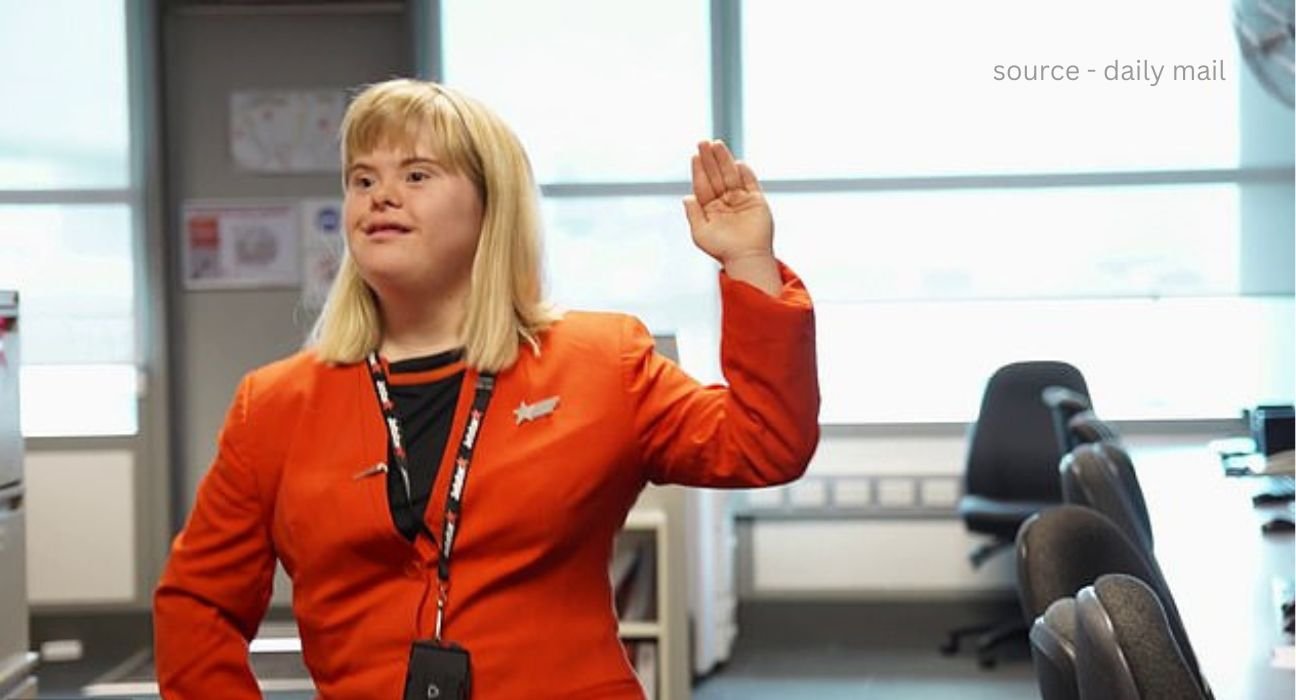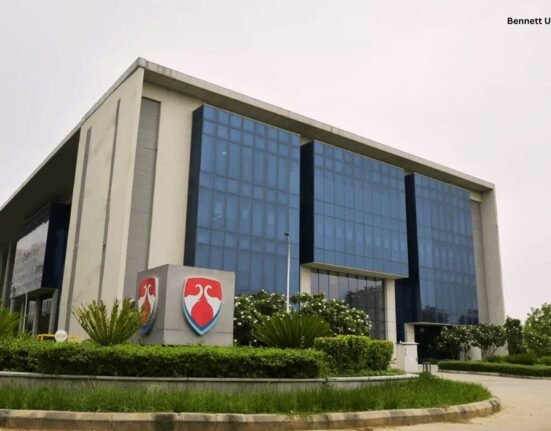Georgia Knoll, a 25-year-old woman with Down syndrome is an ambassador for people with disabilities. She has been an inspiration to many through our ramp walk and modelling gigs. When Jetstar Airways saw her ambition of joining a cabin crew through her viral video on Facebook about practising safety demonstrations. Jetstar then invited her and trained them to live her dream of being an air hostess.
During her one-day experience, she interacted with passengers, served them and even demonstrated safety instructions during the flights. She had undergone training at Brisbane Airport for the same and then received her uniform for it. Other staff who were in the team with her, especially Nicky, the crew manager acknowledged and appreciated how lively Knoll was. Special recognition was given for how joyfully Georgia Knoll interacted with passengers.
What is Down Syndrome?
This disorder is genetic and gives intellectual disability that continues lifelong along with delays in developmental milestones. Down syndrome has its variations from mild to severe, and so do developmental delays and other characteristics. One of the most common causes of learning disability is Down syndrome. Early intervention is one of the most significant management of Down syndrome. Down syndrome is not curable, this is why it’s a disability and not a disease.
What causes Down syndrome?
The cells of the human body have chromosomes with 23 pairs, each pair having one from the mother and the other from the father. But when the chromosome 21st is undergoing the procedure of cell division, an abnormality might occur. Based on the three types of abnormalities, there are three variations of Down syndrome.
Is Down syndrome inherited?
It is significant to comprehend that though Down syndrome is genetic, it does not necessarily mean that it is inherited from the parents. Most cases of Down syndrome are not inherited. Down syndrome occurs when an abnormal cell division occurs in chromosome 21 during the growth of the embryo. Translocation Down syndrome, a subtype of Down syndrome can be inherited. However, the percentage of Down syndrome children affected with translocation Down syndrome is only 4%. Out of these 4%, only half of the children inherit this.
What are the symptoms of Down Syndrome?
The facial appearance of people with Down syndrome is somewhat distinct. Their facial features are often flattened with a small head. Other facial features include a protruding tongue, slanting eyes that do not wlohn with the ethnicity, and a short neck. Sometimes, the shape of the ear is unusual as well. Apart from the facial features, the muscle tone can be tone, that is hypotonia in which muscles appear to be floppy. Their hands can have only one crease in the palm region with hands having a broad and short appearance. Fingers are also shorter than usual. In some cases, over-flexibility is also witnessed.
For infants, the growth is similar to other children. But as they grow, their developmental milestones get delayed. The height growth a pauses or grows very gradually. Developmental milestones like crawling occur almost twice as the expected age. Most people with Down syndrome have some level of intellectual disability associated with it.
In conclusion, disabilities like Down syndrome have now gained a lot in terms of inclusivity within society. In the early 20th century, life expectancy for a person with Down syndrome was only 10 years but now this has escalated exponentially, now a person with Down syndrome can live up to 50 years and even more than that. However, there is still a lot to achieve to bridge the gap between attitudinal as well as infrastructural barriers which can be dealt with through early intervention and its associated personalised management.













Leave feedback about this